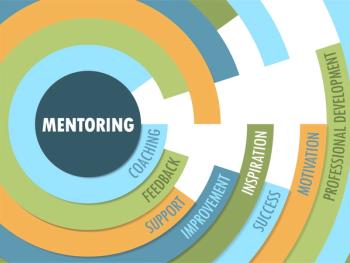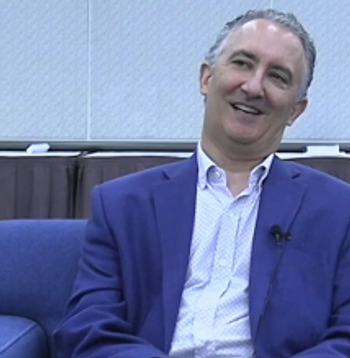
- Vol 32 No 2
- Volume 32
- Issue 2
Why We Need to Know How Clinicians Use the DSM
What is known-and what is not known-about the clinical use of the DSM?
Consider these 2 hypothetical scenarios:
1 You are about to begin work to revise-and presumably to improve the clinical utility of-a widely used diagnostic manual. However, no studies have been conducted about how your manual is used in daily clinical practice, and thus there is no clear understanding of its baseline strengths and weaknesses. How then will you know where to target your efforts so that the manual will ultimately be more useful to your readers?
2 Some critics cite changes in the last iteration of your manual with unleashing unintended and dire clinical consequences. For example, there are claims that recent alterations in certain diagnostic criteria have caused an epidemic of ADHD, and a corresponding rise in the numbers of children treated with stimulants. But since there is a dearth of data about how-or whether-the majority of clinicians meticulously apply the diagnostic criteria in your manual, how can wording changes in the manual be held culpable for these consequences?
We are talking, of course, about the DSM. Both scenarios are predicated on the assumption that there is a clear and exact understanding of how the DSM is used. But there is good evidence-according to
Does it matter how-or whether-clinicians use the DSM? And if you do use it, why do you use it and how do you use it? (See Box.)
I recently interviewed Dr First about what his research has revealed about what is known-and what is not known-about the clinical use of the DSM. A chief goal of the discussion? To bring your attention to a survey that seeks to examine and shed light on how the DSM is used.
SK: Your article notes that clinicians are probably not using the diagnostic criteria as intended. What kind of studies suggest this?
Dr First: I think most people intuitively know that clinicians do not apply all the DSM criteria in a systematic way. In fact, evidence suggests that diagnostic criteria are not methodically applied. Several studies have compared psychiatric diagnoses made by researchers in practice settings with diagnoses made by researchers in the same patients using structured interviews in which each DSM criterion was systematically applied: those studies showed significant diagnostic discrepancies.2-6 As we outline in our article, those discrepancies likely indicate that clinicians were not evaluating each relevant diagnostic criterion in order. Rather, they were probably making a diagnosis by other methods-such as matching the patient’s presentation to an internalized prototype.
SK: How would knowing how the criteria are actually used help the APA to respond to those critics who claim that changes in the diagnostic definitions will necessarily have a negative impact on clinical practice?
Dr First: Most concerns about the dire consequences on diagnostic prevalence from changes in wording or diagnostic thresholds in the DSM assume that, as a rule, clinicians slavishly follow the DSM-5 criteria sets to the letter. A better understanding of how clinicians actually apply the diagnostic criteria sets in practice would provide a more realistic picture of diagnostic practice patterns and would most likely demonstrate that such concerns are overblown.
SK: What kind of information is available in the research literature regarding the use of the DSM? What are the advantages and disadvantages of the various approaches to collecting this information?
Dr First: Most of what we know regarding the use of the DSM is based on written surveys of clinicians: the most recent predates publication of DSM-IV in 1994.1 These surveys largely concentrated on clinicians’ attitudes toward the DSM: very few questions were included about how they actually used the DSM. While surveys can potentially provide useful information (especially if more questions are included querying clinicians about their actual use), survey data are hindered by factors such as the generalizability of the results (are clinicians who are willing to respond to such a survey representative of clinicians at large?) and reporting bias (clinicians are apt to inflate their reported use because it is what they should be doing rather than what they actually are doing).
A more accurate method of determining clinician use of the DSM is to conduct such studies “in vivo” so that use can be measured in the context of actual clinical encounters rather than on clinicians’ recollections of their use. To date, only one such study-which examined the use of DSM child diagnoses during office visits in a sample of primary care clinicians-has been done.1,7 Perhaps not surprisingly, given that these were non-psychiatric clinicians, the DSM was used in only a quarter of the visits in which a psychosocial problem was recognized; close to 60% of the primary care clinicians reported no use of the DSM at all.
We invite you to go to
Disclosures:
Susan Kweskin is Editorial Director of Psychiatric Times.
References:
1. First MB, Bhat V, Adler D, et al. How do clinicians actually use the Diagnostic and Statistical Manual of Mental Disorders in clinical practice and why we need to know more. J Nerv Ment Dis. 2014;202:841-844.
2. Fennig S, Craig TJ, Tanenberg-Karant M, Bromet EJ. Comparison of facility and research diagnoses in first-admission psychotic patients. Am J Psychiatry. 1994;151:1423-1429.
3. Kashner TM, Rush AJ, SurÃs A, et al. Impact of structured clinical interviews on physicians’ practices in community mental health settings. Psychiatr Serv. 2003;54:712-718.
4. Miller PR, Dasher R, Collins R, et al. Inpatient diagnostic assessments: 1. Accuracy of structured vs unstructured interviews. Psychiatry Res. 2001;
105:255-264.
5. Ramirez Basco M, Bostic JQ, Davies D, et al. Methods to improve diagnostic accuracy in a community mental health setting. Am J Psychiatry. 2000;157:1599-1605.
6. Shear MK, Greeno C, Kang J, et al. Diagnosis of nonpsychotic patients in community clinics. Am J Psychiatry. 2000;157:581-587.
7. Gardner W, Kelleher KJ, Pajer KA, Campo JV. Primary care clinicians’ use of standardized psychi-atric diagnoses. Child Care Health Dev. 2004;30:401-412.
Articles in this issue
almost 11 years ago
Introduction: Neuropsychiatry Is Thrivingalmost 11 years ago
Management of Mild Traumatic Brain Injuryalmost 11 years ago
Update on Psychogenic Nonepileptic Seizuresalmost 11 years ago
Transcranial Magnetic Stimulation in Neuropsychiatry: An Updatealmost 11 years ago
The Neural Basis of Bipolar Disorderalmost 11 years ago
Beyond Addictionalmost 11 years ago
Transparent Notes in Psychiatryalmost 11 years ago
Shadows on a Wall: Phenomenology in an Acute Care Settingalmost 11 years ago
Unanswered Questionsalmost 11 years ago
The Interface of Dermatology and PsychiatryNewsletter
Receive trusted psychiatric news, expert analysis, and clinical insights — subscribe today to support your practice and your patients.

















